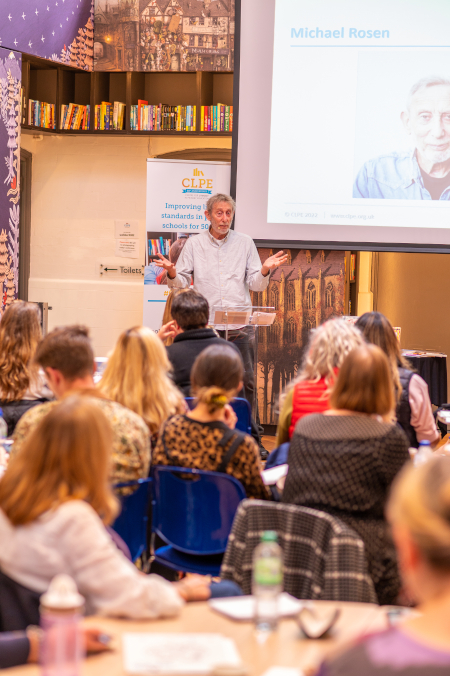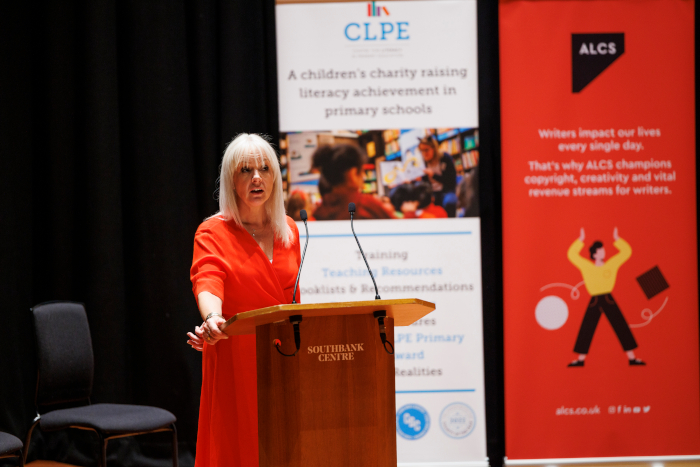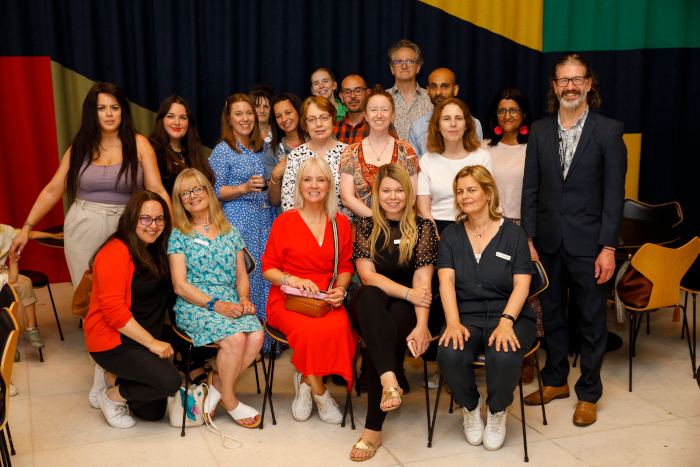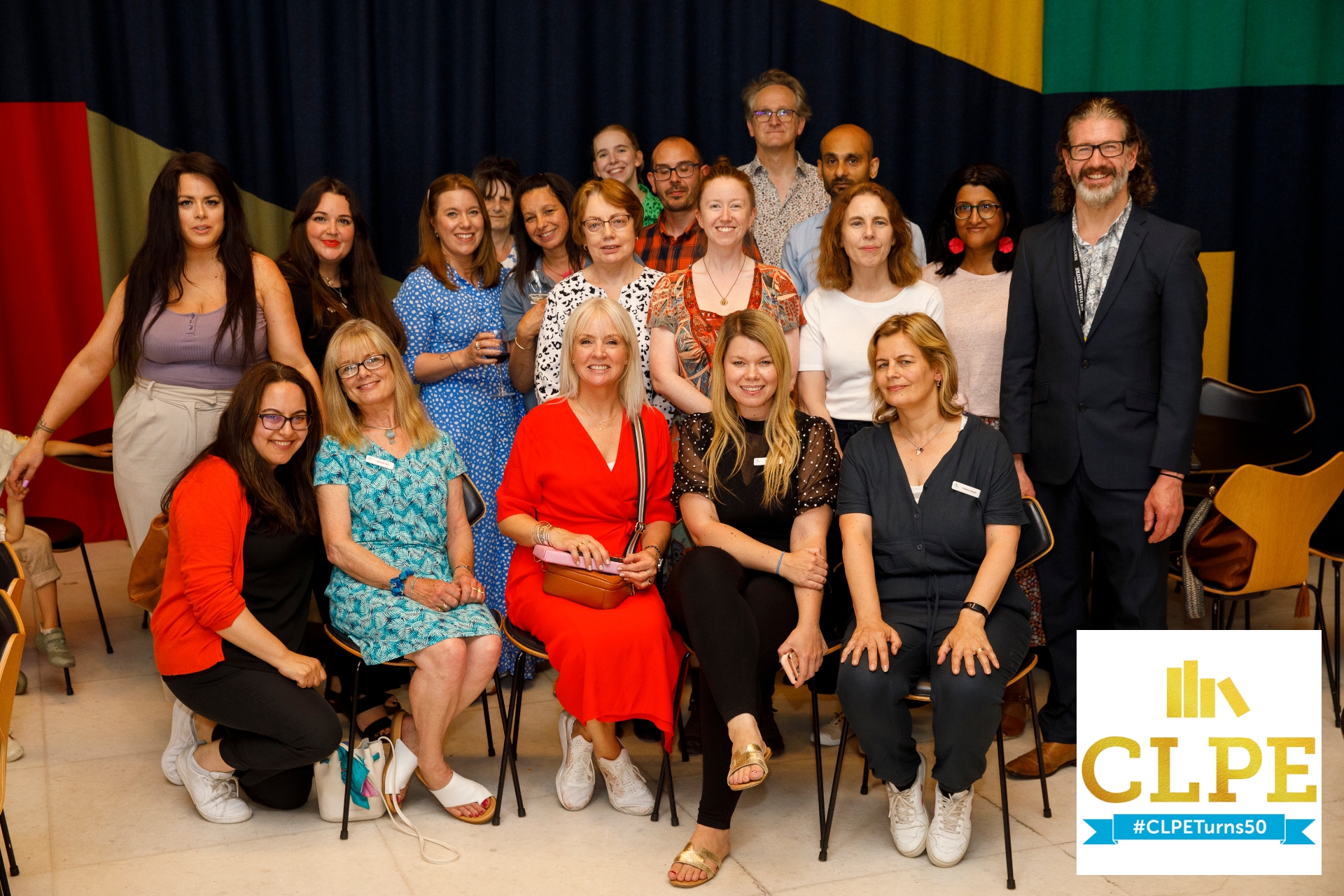
LoveReading exists because reading matters and books change lives, a guiding principle that chimes with the ethos of a ground-breaking organisation that’s been changing lives since 1972. Namely, the Centre for Literacy in Primary Education (CLPE).
As a result, we couldn’t be more thrilled about new partnership between LoveReading and CLPE — read more about it here.
We’re also over the moon to share this interview with Louise Johns-Shepherd, CEO of CLPE. Whether you’re a parent, teacher, or avid book reader, it’s packed with inspirational insights. Over to Louise…
Please could you explain the purpose of the Centre for Literacy in Primary Education (CLPE)? Why is the work of the CLPE so vital?
The Centre for Literacy in Primary Education is a UK based children's literacy charity working with primary schools. Our work raises the achievement of children's reading and writing by helping schools to teach literacy creatively and effectively, putting quality children’s books at the heart of all learning.
We want to improve the life chances of children by ensuring that every child has access to quality experiences of literacy and that all teachers have the knowledge and resources to support children become confident, happy and enthusiastic readers and writers, with all the benefits this brings.
The CLPE corebooks database is a brilliant resource for teachers to find fresh, quality reading material, and also a great tool for parents. What selection criteria is used?
Corebooks have been recommended by CLPE since 1996. They are a selection of carefully chosen texts for teachers to use when they are developing collections for their classrooms and schools as part of their reading and literacy programmes.
The text selections are made by our librarian and by our teachers and each one demonstrates the key role that children's literature can play across the curriculum, and in forwarding children's progress as readers. The books are chosen because they support children learning to read and in their development as readers at all ages and stages.
Could you run through the purpose of your Power of Pictures programme? How do picture books enhance children’s life skills and literacy skills?
The Power of Pictures helps teachers to read picture books in the classroom, to children of all ages. The programme takes teachers and children on a journey, exploring how words and illustrations combine to tell a story and to share the creative processes a published writer goes through to create a narrative in words and pictures.
Each book on the programme has three teaching sequences to show teachers how this process can be differentiated to use across a school, from EYFS to Year 6, creating a community of readers and writers reading, illustrating and writing together. Much has come out of the Power of Pictures research including:
- Children who are given opportunities to read and respond to picturebooks learn about sophisticated narrative structure, plot and character development in an accessible way.
- When children are given opportunities to draw as part of the writing process this helps them to formulate, develop and extend ideas for writing; making their independent, self-initiated writing richer.
- A focus on reading illustration helps to develop children’s deeper comprehension skills, allowing them additional opportunities to infer, deduce, think critically and empathise.

Do you have any personal favourite picture books?
Not Now Bernard by the late, great, David McKee is one of my all time favourites as is ‘Oi, Get Off Our Train’ by John Burningham. These are books that I loved using in the classroom and also ones that my own children loved and can still recite.
More recently, I have a very soft spot for Here We Are, Notes for Living on Planet Earth by Oliver Jeffers. This was the book we chose at CLPE to build a ‘recovery’ teaching unit around in September 2020. It is an absolutely fabulous book and it reminds me of how a really powerful book can unite and galvanise and inspire. More than 13000 teachers from 8000 schools taught that unit as schools returned to face-to-face teaching in September 2020, the memory of all those schools sharing their work and experiences of using the book was a really bright spot in a very tricky time.
Could you share some of the findings of your Reflecting Realities research into diversity in children's literature? For example, how (and why) has the landscape changed since the previous set of research?
We published the fifth Reflecting Realities Report in 2022, the fiftieth year of CLPE’s existence. Since 1972 the CLPE has been working to ensure that all children have access to a range of quality texts in order that they can become happy, enthusiastic readers and writers with all the benefits this brings.
This means that in their schools, their homes, their libraries and their bookshops, children need to meet characters that look like them – and those that don’t look like them; characters that inhabit similar – and different – worlds; stories that both reflect their lives and show them the lives of others. It was this belief in the need for inclusive and diverse reading materials for all children that led us to publish the first Reflecting Realities survey in 2018.
As the first statistics in that report showed there was a stark and immediate need for action. Children from racialised minorities in our country were facing bookshelves where they saw little or nothing that looked like them, they were not visible in our literary world. The first publication led us into difficult conversations and hard exchanges. Not everyone was pleased about the findings of the report, not everyone believed it was true, not everyone thought it was necessary.
However, the acknowledgement of the need to change, to reflect on what had gone before, to make real and visible efforts to make the output look different was also obvious. Over the last five years we at CLPE have worked with our partners and alongside so many others to support a real and visible change across the literacy landscape. We detailed many of these efforts in our report published in 2021 and we can see, in the figures published in the 2022 report, the impact of that work. There has been a rapid increase in the volume of titles featuring children from minority ethnic backgrounds and we welcome this increase.
We also welcome the increased visibility of authors, illustrators and poets of colour. We welcome it because it improves the choice for young readers, it makes everyone visible in the world of books and it makes everyone’s reading diet better.
What changes have you seen in how literacy is approached in the classroom through your career? And what are the biggest challenges faced by today’s teachers in relation to fostering reading for pleasure? For example, your Reading for Pleasure 2021-2022 survey revealed that over 60% of classrooms have no access to a budget for new books.
I think that the most positive change I have seen since I started teaching is the universal acknowledgement, backed by research, that reading for pleasure is fundamentally important. Teachers have always known in their hearts that helping children to love books, stories and reading helps them to develop, learn and grow but now we have really robust and well regarded research that backs that up.
Books are the foundation of any reading curriculum, and to encourage reading for pleasure schools need to be able to provide children with a wide and diverse range of books. Encouragingly, 73 percent of teachers told us they had more or about the same number of books in school as they had before the pandemic. This suggests the majority of schools have maintained their book stock. On the other hand, it also means that more than one in four have fewer books than they did before the pandemic.
The vast majority of primary school teachers (94.5 per cent) have a book corner in their classrooms. However, in 57 percent of these schools the book corners contained fewer than a hundred books. This is a low figure if you are trying to create an environment where children have access to a range of texts and text types and genuine opportunities to develop their own tastes and interests in literature.
This situation is further exacerbated by our findings about how often teachers were able to change the books in their classrooms. Nearly half the teachers (48 per cent) told us they couldn’t change the books in their classroom during the academic year.
We also asked teachers where new books in their classrooms came from. Only 37 percent of teachers have a budget from their school for new books. This means that nearly two-thirds of teachers have no access to a budget for new books.
To encourage reading for pleasure, classrooms need books that encourage engagement, whoever pupils are and whatever their starting point. Children need access to texts that reflect the lives they are living, take them to new worlds and introduce them to new people – real and imagined. To build their reading repertoire and support them to develop stamina and to understand text construction, they need to have variety and the opportunity to develop and talk about new and different styles of books, authors and illustrators.
A stagnant and never-changing book stock is unlikely to support them to develop a habit of reading for pleasure. This is especially true for children with less (or no) access to books at home – and they are precisely those whose literacy will have suffered most from the lockdowns.

If pushed for time and money, what’s the best single measure teachers (and parents) could take to enhance literacy?
Reading aloud is the single most important thing a teacher can do. It should be a regular part of every school day. Hearing a text read aloud, sharing that experience with others around them, enables children to experience and enjoy stories that they might not otherwise meet. Reading aloud slows written language down and children hear and take in tunes and patterns, it introduces them to language, to characters and to plot lines and helps build knowledge about all these things – and a love of story or poetry without any of the pressures.
What’s your proudest CLPE moment so far? And what’s on the cards for 2023?
Gosh, there are so many. I work with the most amazing team of people who constantly amaze me and make me proud.
I was so proud when we were able to crowdfund the refurbishment and launch our Literacy Library; the first time (and all the subsequent times) we filled the Olivier Theatre with more than 1000 children to watch poetry; when we published the Reflecting Realities report; when we demonstrated that studying Picture Books in Y5 improves reading and writing, and when we won the Eleanor Farjeon Award and Southwark Charity of the Year in 2020.
I was very proud of the way our team helped teachers during the pandemic – particularly through our whole school units. I’m very lucky, hardly a week goes by when I don’t hear or see something from someone in a school which makes me proud of all that our team at CLPE do.
Describe your typical working day.
One of the brilliant things about my job is that there is rarely a typical day. It is usually a busy mixture of meetings with interesting people, events where I get to chat about books or teaching, some reading of new books or new research - and planning. The CLPE team are always planning some fantastically interesting new thing!

What was your favourite book as a child? Which books from childhood have you re-read most often?
The one I remember the best is AA Milne’s When We Were Very Young. I have a copy that was given to me on my third birthday and I can still recite almost all the poems. I love the way that reading memories can just take you back so quickly. When I was young, I absolutely loved the Noel Streatfield Ballet Shoes stories. Puffin brought out a new edition of Ballet Shoes recently and I read the whole thing again – it was like getting a hug from a friend.
What are you reading at the moment?
Well, its just after Christmas so I have a wonderful pile of new books that I’m working my way through. I have just raced through Bob Mortimer’s The Satsuma Complex and the latest Richard Osman and have also just finished the wonderful Shrines of Gaiety by Kate Atkinson. Next in my pile is Maggie O’Farrell’s The Marriage Portrait and Kate Rundell’s Super-Infinite.
In terms of children’s books, we are very lucky at CLPE because our librarian, Phoebe gives us a list of new books and new-in books every month and then there is a trolley in the library that we can work our way through. This means I get a wonderfully varied diet of up to date picture books, poetry and novels and all I have to do is walk across the hall.
Who would you invite to your dream literary party?
Well, we had a party at CLPE in September to celebrate 50 years of CLPE. It was absolutely wonderful and pretty much everyone who would be at my dream party was there, you can see the photos here.
Tell us a secret about books…
If you read for pleasure when you’re 11 it will have a bigger impact on all aspects of your future than almost anything else – including your parents’ level of education.
Stay up to date with CLPE:
Website: clpe.org.uk
Twitter: @clpe1
Facebook: CLPE
Instagram: @clpe.org.uk
You might also want to read the rest of our Industry Insights series.



Comments (0)
Leave A Reply
You must be logged in to post a comment.